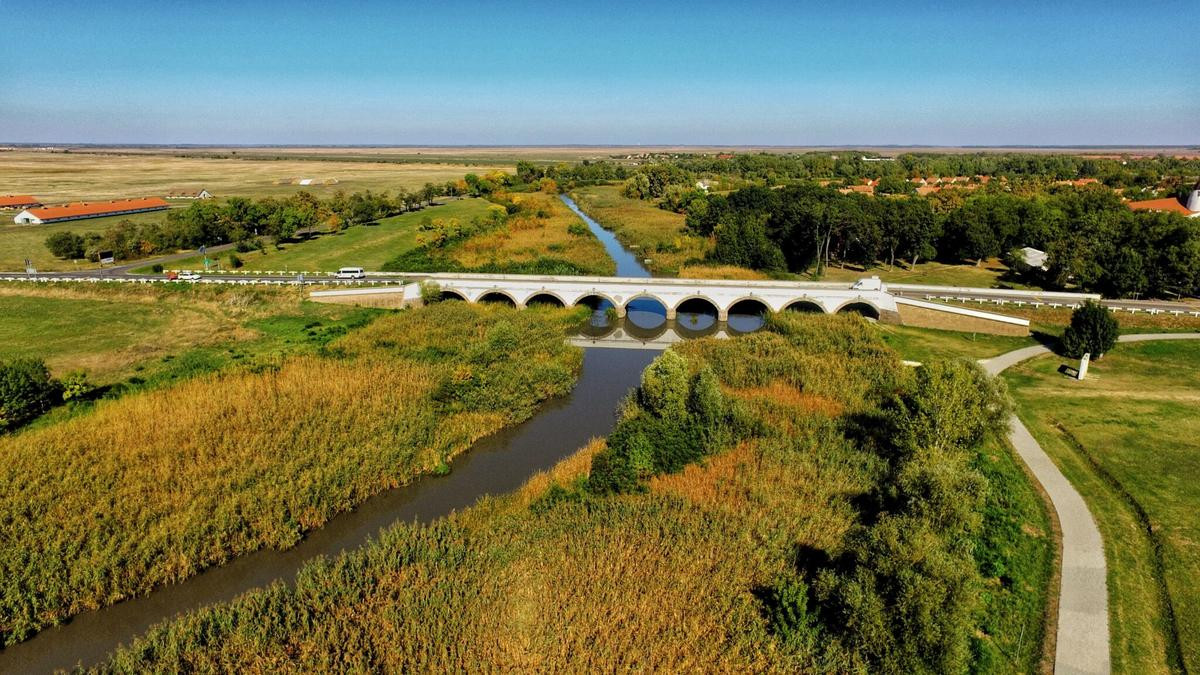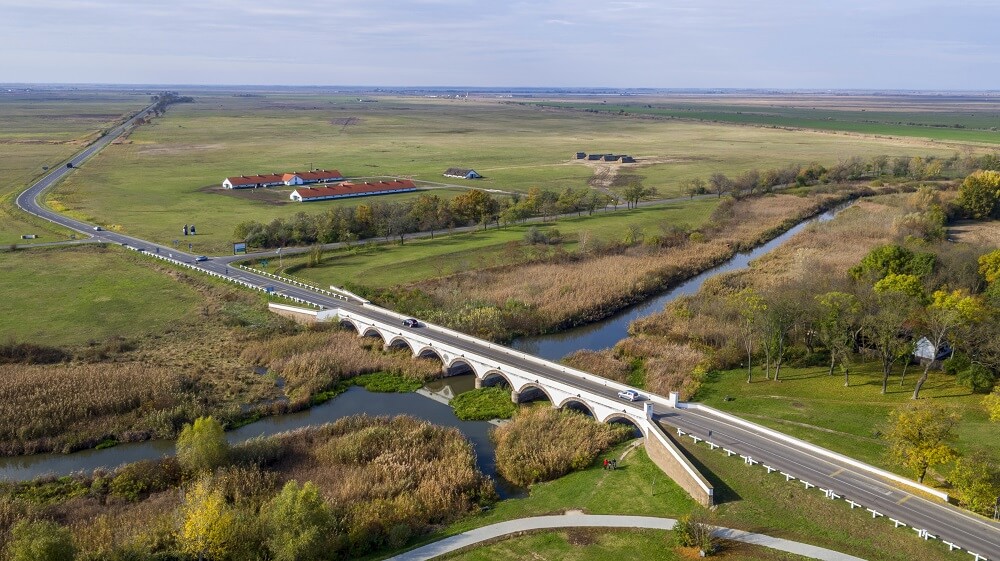



Hortobágy is an 800 km² national park in eastern Hungary, rich with folklore and cultural history. The park, a part of the Alföld, was designated as a national park in 1973, and elected among the World Heritage Sites in 1999. Wikipedia
Spring (April–June):
Best time for birdwatching (migratory birds arrive)
The landscape comes to life with blooming flowers and greener grasslands
Autumn (September–October):
Another great time for birdwatching, especially for migratory birds returning
Enjoy mild weather and the golden tones of the fields
Summer (June–August):
Warm temperatures make it perfect for outdoor activities like hiking, cycling, and watching wildlife
However, this is also peak tourist season, so expect more visitors
Winter (November–February):
Off-season, fewer crowds, and a quiet, peaceful atmosphere
Great for those who enjoy solitude and winter landscapes, but many attractions may be closed
Early morning: Ideal for birdwatching as the birds are most active and the light is perfect for photography
Late afternoon: Golden hour for photography and a peaceful experience as the crowds tend to thin out
Departure: From Budapest Keleti Railway Station
Arrival: Hortobágy or Nagyiván stations (with a transfer if needed)
Duration: ~2.5 to 3 hours
After arriving, a short taxi ride or local transport will take you to the park's key areas
Departure: From Budapest Népliget Bus Station
Arrival: Hortobágy or nearby towns like Balmazújváros or Debrecen
Duration: ~3 hours
Bus stations are often a little farther from the park's core, so a short taxi ride may be needed
Route:
Drive via M3 motorway (heading east from Budapest), exit at Hortobágy
Duration: ~2 hours
You can rent a car in Budapest for more flexibility to explore the park and surrounding towns.
If you enjoy cycling, the Hortobágy area offers an excellent bike trail network, ideal for exploring the vast open plains at your own pace.
Puszta (Great Hungarian Plain)
The park is famous for its expansive steppe landscape, where you can experience the traditional Hungarian Puszta lifestyle, with herds of cattle and horses grazing freely.
Birdwatching
Hortobágy is one of the best places in Hungary for birdwatching, especially during the migration seasons. Over 340 species of birds have been recorded, including rare species like the Great Bustard and white-tailed eagle.
Visit the Hortobágy Birdwatching Tower for an elevated view of the wetlands.
Hortobágy National Park Visitor Centre
The visitor center in Balmazújváros offers exhibits on the local flora and fauna, as well as information about the park's history and conservation efforts.
You can also join guided tours from here.
Nine-Hole Bridge (Kilenclyukú híd)
A beautiful and historic stone bridge that crosses the Hortobágy River, built in the 19th century, with picturesque views of the surrounding landscape.
Hortobágy Ethnographic Village
Visit Hortobágy’s open-air museum, where you can experience traditional Hungarian village life, see craftspeople at work, and explore historic buildings such as thatched-roof cottages.
Hortobágy Wildlife Reserve
The wildlife reserve is home to rare Hungarian animals, including the Hungarian grey cattle, water buffalo, and racka sheep. It's also a great place to witness the traditional Hungarian herders (csikós) at work.
Szálkás Kő Hill
A natural landmark offering panoramic views of the park, this hill is perfect for hiking and photography. It’s located in the southern part of the park.
Hortobágy Horse Show
If you visit during the summer months, you can witness the famous Hungarian horsemanship displays, where expert riders demonstrate traditional riding techniques and skills.
Mátai Ménes (Mátai Stud Farm)
A historic horse farm where you can watch the Hungarian lippizaner horses and learn about the region’s equestrian culture.
🐦 Birdwatching Tours
Hortobágy is internationally recognized as a UNESCO biosphere reserve and a birdwatcher’s paradise. Join a guided birdwatching tour to spot cranes, herons, eagles, and even the rare Great Bustard.
Best locations: Hortobágyi Fishponds, Kondás Lake, and Egyek–Pusztakócs marshes.
🐴 Horse Show and Traditional Herding Demonstrations
Attend a Puszta Five Horse Show, where csikós (Hungarian herdsmen) perform incredible feats of horsemanship. Held at Mátai Ménes Stud Farm.
🚶 Nature and Walking Trails
Explore marked walking trails through grasslands, marshes, and fishponds. You’ll encounter diverse wildlife and scenic landscapes.
🚲 Biking
Rent a bike and explore the flat plains via well-marked bike paths. Great for a leisurely ride with panoramic views.
🛶 Canoeing and Boat Tours
In certain seasons, you can take a guided boat tour through marshes for close encounters with waterbirds and native flora.
🎨 Visit the Hortobágy Craft Village
Learn about traditional Hungarian crafts: pottery, weaving, and blacksmithing. Workshops available for hands-on experience.
🦌 Visit the Animal Park
See native species such as gray cattle, buffalo, sheep, wild horses, and water birds up close in semi-wild enclosures.
📸 Photography
Sunrise and sunset over the steppe and wetlands offer breathtaking light. Ideal for landscape and wildlife photography.
| Hotel / Guesthouse | Location | Description |
|---|---|---|
| Hortobágyi Csárda & Guesthouse | Hortobágy Village | Traditional, rustic guesthouse next to the historic csárda (inn). Offers authentic food and easy access to attractions. |
| Mátai Ménes Guesthouse | Near Stud Farm | Great for horse lovers; includes access to horse stables and riding programs. |
| Balmazújvárosi Thermal Hotel | Balmazújváros (20 min away) | A relaxing spa hotel with thermal baths and wellness services. |
| Hortobágy Eco Lodge | Near visitor center | Eco-conscious stay with guided tours included. Ideal for birdwatchers. |
| Debrecen Hotels (e.g. Hotel Lycium) | ~30 km east | For more upscale or city-style lodging with greater amenities. Good base for day trips. |
Hortobágyi Palacsinta: Pancake filled with spiced meat, served with paprika sauce.
Gulyás (Goulash): Rich meat stew with paprika, served with bread or noodles.
Paprikás csirke: Chicken paprika with creamy sauce and dumplings.
Lángos: Fried dough snack with sour cream, garlic, and cheese.
| Restaurant | Location | Highlights |
|---|---|---|
| Hortobágyi Csárda | Hortobágy village | Historic 18th-century inn with hearty Hungarian fare. Try goulash and palacsinta. |
| Mátai Ménes Étterem | Near stud farm | Offers meals made with local ingredients. Ideal after a horse show. |
| Café Mókus | Hortobágy Visitor Center | Light snacks, local cakes, and excellent coffee. Great for a break mid-tour. |
| Paprika Csárda | Balmazújváros | Great family-run restaurant with regional dishes and outdoor seating. |
| Street Food Vans (seasonal) | Near festivals or main square | Try lángos, kürtőskalács (chimney cake), and local sausages. |
Hortobágy is not only a natural treasure but also a vital repository of Hungarian folk traditions, animal husbandry, and rural lifestyle that has remained relatively unchanged for centuries.
The csikós are the legendary horsemen of the Great Hungarian Plain (Puszta). Known for their blue trousers, black hats, and unmatched horse-handling skills, they are both livestock herders and folk heroes.
The "Puszta Five" (rider standing on the backs of five horses) is a signature act.
You can see them during horse shows or working in open fields herding Hungarian grey cattle.
Hortobágy is still home to traditional shepherds who raise ancient Hungarian livestock:
Grey cattle
Racka sheep with spiral horns
Mangalica pigs
These herders follow seasonal grazing cycles, often living in isolated thatched huts on the steppe (tanya).
Dwellings are typically whitewashed, one-story houses with thatched roofs and mud or adobe walls.
The Nine-Hole Bridge (Kilenclyukú híd) is an iconic 19th-century stone bridge, symbolizing both engineering and pastoral life.
Traditional Hungarian folk music with violins, zithers, and bagpipes is often performed during village festivals.
Dances feature fast footwork and spinning, rooted in rural courtship and storytelling.
Hortobágy’s craft village showcases local artisans who make:
Pottery with natural motifs
Woven textiles from wool and hemp
Leather saddlery and whips used by herders
You can purchase handmade goods directly from the craftspeople.
Hortobágyi Lovasnapok (Horse Days) – July
Celebrates equestrian heritage with races, shows, markets, and folk performances.
Crane Migration Festival – October
Locals celebrate the arrival of tens of thousands of cranes, an awe-inspiring natural event accompanied by birdwatching tours and cultural events.
Open-fire cooking (bogrács) is a key tradition: stews like goulash are simmered over wood fires.
Food and drink are deeply tied to pastoral life: home-baked bread, sheep cheese, pálinka (fruit brandy).
In essence, Hortobágy offers a rare glimpse into a living heritage — where land, livestock, and local life have been intertwined for centuries.